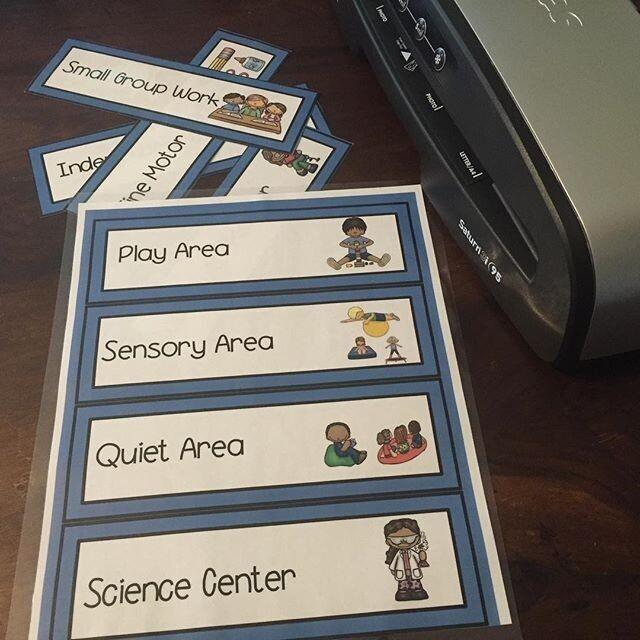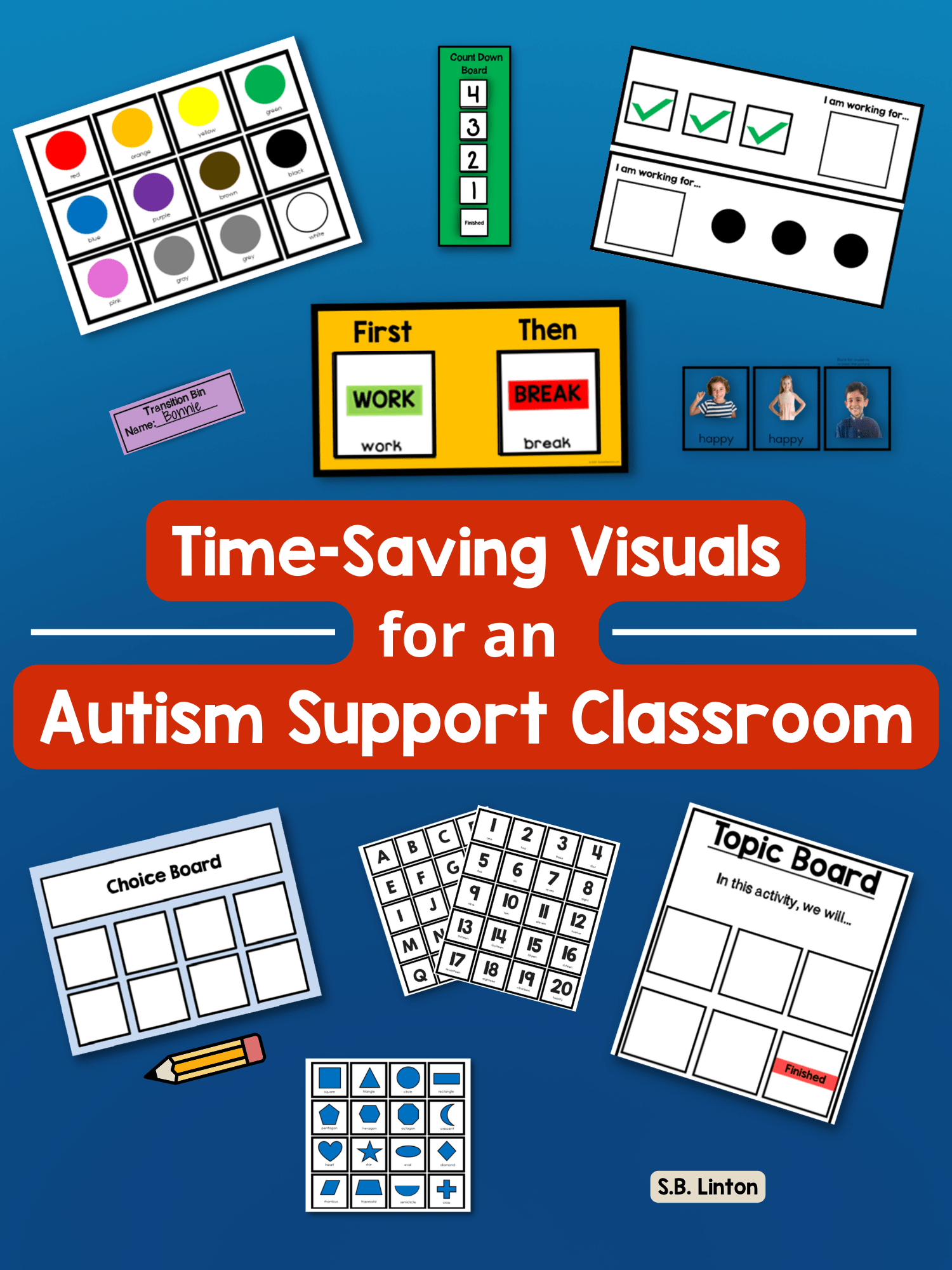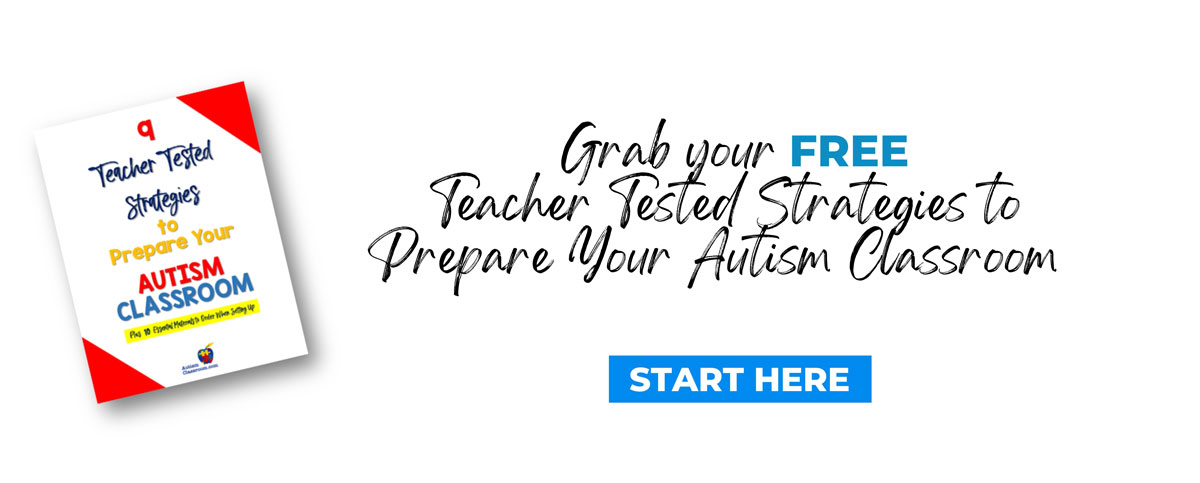In my classroom, many of my students did not use a lot of words. They certainly had a lot to communicate, but it often came across as what some people call "behaviors." They all wanted to let us know what mesage they were trying to get through, but it was difficult. As my own teaching journey progressed, I learned the importance of including visual cues and visual messages along with my verbal talking. Classroom visuals for autism support became a stong focus.
Visual supports are crucial tools for increasing communication in people with autism. Many students with autism struggle to understand verbal instructions and communication, but often have strong visual skills. Utilizing visual supports can capitalize on this strength and help them take more active roles in their learning.
Visual supports come in various forms like pictures, objects, and picture or icon boards. For example, choice boards are excellent tools for giving people with autism the ability to communicate their preferences. They can be used for games, meals, and other activities. With a choice board, the students can see their options in a collection of pictures and choose by saying or pointing out what they want.  Sensory Choice Board
Sensory Choice Board
Visual schedules are a versatile tool and they allow students with autism to see what is coming up in their day. This helps reduce anxiety by giving them a look at what they can expect in their daily routine: school, chores, meals, bedtime, etc. Depending on the individual’s needs, using a visual schedule autism classes can break down activities even further to include smaller tasks. The visual schedule also serves as a way for parents, teachers, or guardians to slowly introduce something new into the person’s daily schedule. Click the images below to the resource.
Another useful visual support is a First-Then Board. First-Then boards can encourage students with autism to do an undesirable task first, because they will then be able to do an activity they enjoy afterward. Providing this single task as a visual schedule autism teachers can help students focus better. This tool is another way to bring predictability into a student's day. Many teachers create a generic first-then board and place pictures or photos that are meaningful and recognizable to the student on them. Classroom visuals for autism support and understanding, such as this, go a long way.

Topic boards can be used during group lessons to show students what to expect during the lesson. Absolutely one of my favorite visuals for autism classroom teachers to help students understand a situation! Even we like to know when something will be over. Think meetings and PD...you always take a look at the agenda to see when the break is and when it will be over. You students like to know this information too.
Please don't underestimate the power of a countdown board. Some students will hate it and some will thrive with it. In either case, it still gives information visually about the ending of an activity. One on the most under-used visuals for autism classroom time mamangement, for sure. Just pull off the numbers as time winds down. 
You can find a first-then board, a count down board and other visual materials in the visual supports bundle here.
Five Simple Ways You Can Easily Incorporate Classroom Visuals for Autism Into Your Room
Since we know visuals are the bread and butter of any autism classroom, here are 5 simple ways you can easily incorporate visuals into your classroom:
1. Communication
Whether your students are using PECS (Picture Exchange Communication System), low-tech AAC, or high-tech AAC, visuals are a necessary tool for our students to communicate with us. One way to keep communication cards handy is by having them on my lanyard so they can easily be pulled out if AAC is forgotten or if a silent visual prompt needs to be given. They can be helpful visuals for autism classroom play time communication as well, like in the example below of the Structured Play Communication Boards Visual Support for Transportation.
2. Visual Schedules
Like we have talked about earlier, visual schedules help lessen the anxiety our students feel, provided students opportunities to practice executive functioning skills and independence, and allow them to be an active participant in their day and their learning. Using a visual schedule autism support for your student can be amplified! See our schedules here.
3. Routines
Within the various routines in your classroom, you can easily make visual routine cards to help students remember steps within each task. You can place visual routine cards in the bathroom for both toileting and hand washing or by the classroom door for dismissal procedures or any time your students are leaving the classroom.
The real trick to get the morning started right is to tape that visual routine card at each student's cubby or locker so that that they refer to it each morning to get their day started. This serves as a reminder of what to do, it gives you something to direct them to if they get off tasks, it teaches them how to read and follow directions and it builds independence once they can point to it and use it on their own.
One of your new favorite places to have visual reminders might become during lessons and centers. You can put visuals up to let students know what supplies they will need. Not only does it help them know what to expect, but it builds literacy skills as well – don’t forget to add that quality to your teacher observation lesson plan!!!

4. Visual Behavior Cues
At some point, we have all been the teacher who has given way too many verbal cues and once we realize it, we have a palm to face moment. But when you are away from your classroom, what other strategies can you use if you don’t have all your tools with you? Here are some options to aid with visuals for autism classroom behavior support. You attach visual behavior cue cards to your lanyard (or fanny pack if you’re one of those cool cats).
You can also attach them to a clip board or plastic folder, a plastic zipper envelope, a felt apron or something else portable. Visual behavior cue cards will save your voice and likely provide a higher rate of return than constant words. Behavior cue cards are easy and convenient to use and all team members that work with a student can easily use them. We include visuals for cues in the Step by Step Autism Classroom Design Course which helps you get started with your classroom set up.
Token boards also help with giving a visual behavior cue by letting students see what they are earning. This is our resource for token boards below:

5. Visual Timers
We know many of our students struggle with the concept of time and have anxieties about the unknown. They may use their visual schedule and know what is coming next but they struggle to know how long until the next task. Visual timers are a fun way to help students anticipate the next activity. Many people go for the "Time Timer" that shows the color red until the time runs out. Some might consider a card, like the one below that cues students how much time is left in an activity. There are some fun light up visual timers but one you can consider is classroom timers. Some students love to pick different timers and enjoy knowing how much time until the next lesson. NOTE: Some students will find this distracting so you will need to do what is best for your students.
There are SO many ways you can use visuals in the classroom. This first-then set helps make directions visual for students. Click the image to see more.



These are just a few of my favorites. Find ways that visuals can support your student's arrival to school on the blog here. Or, check out this visual supports bundle that has many of the visuals you could need in your classroom.
Looking to set up your learning environment?
Click the book to see our book of visual supports that you just cut, lamiante and use.
Click the yellow box below for educator and parent tips.








